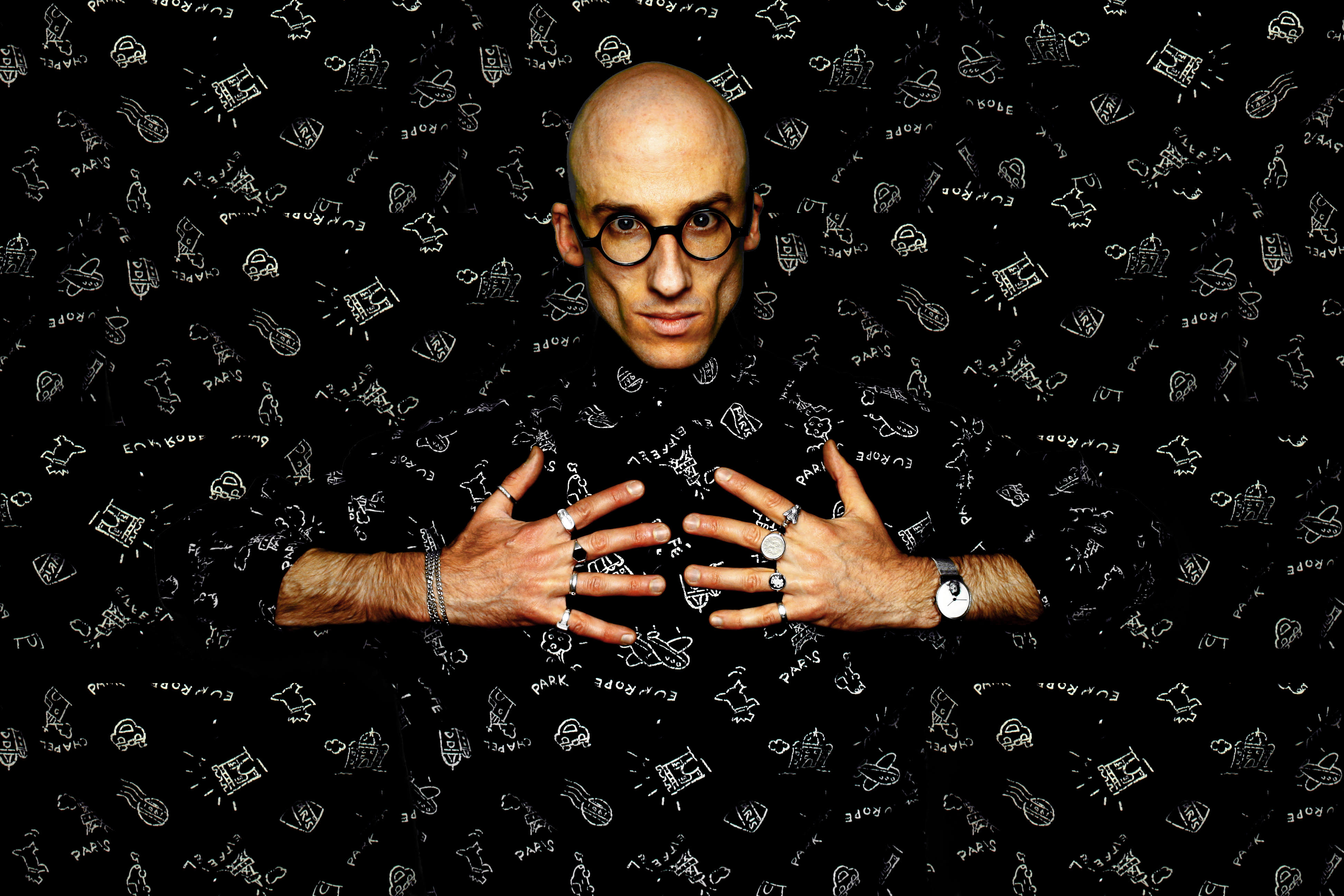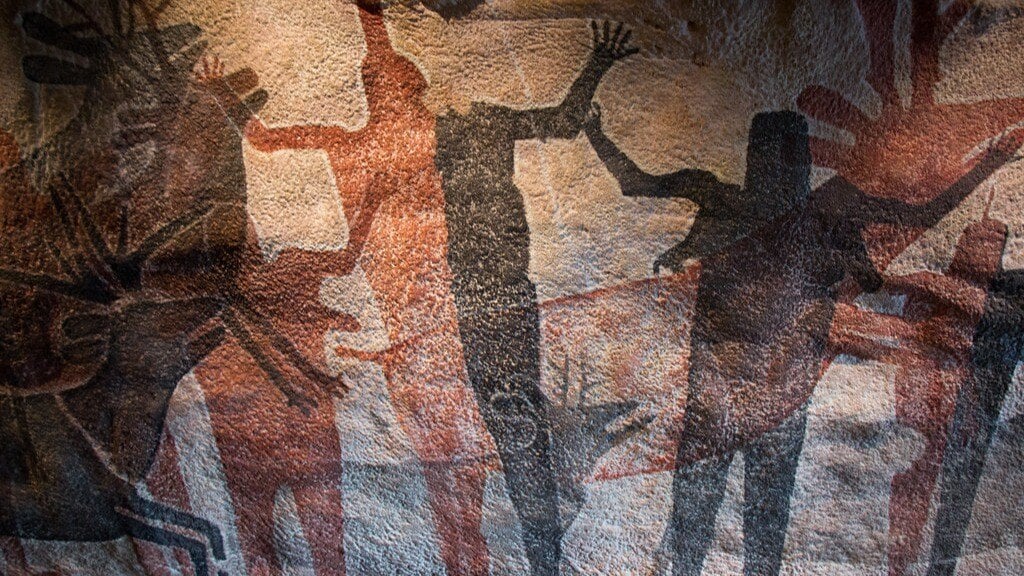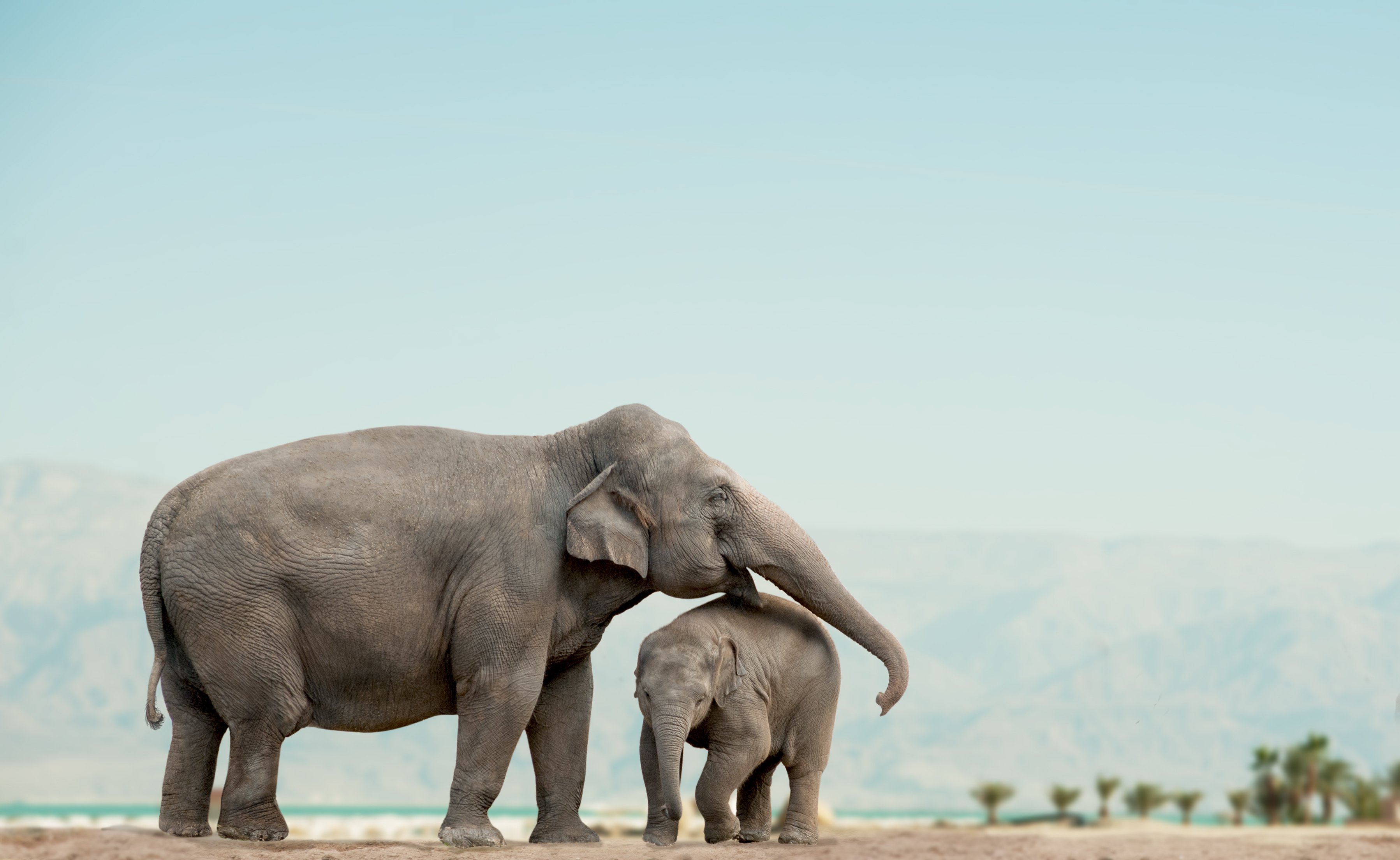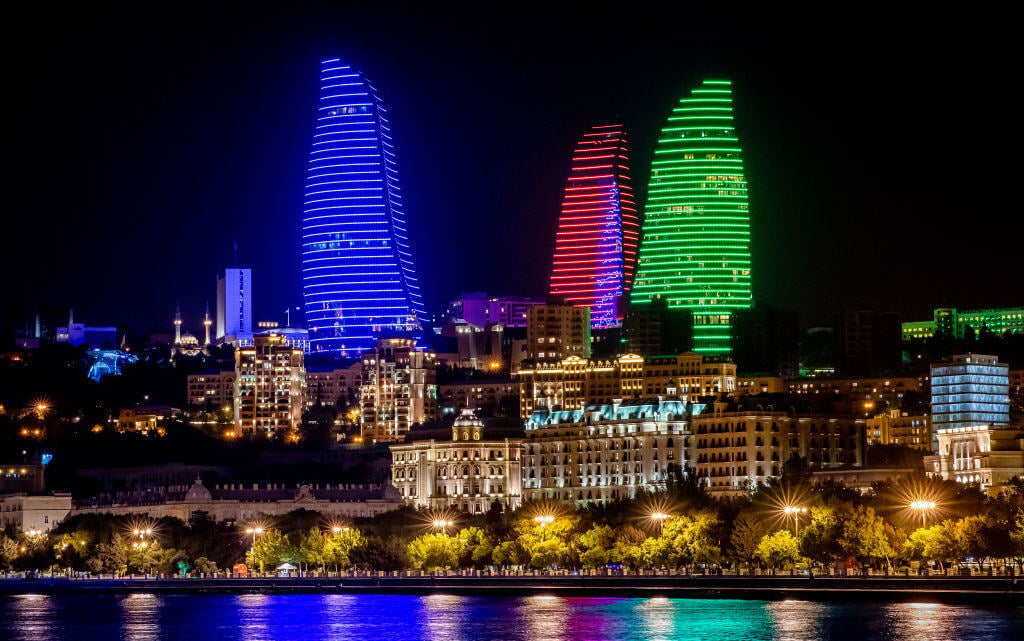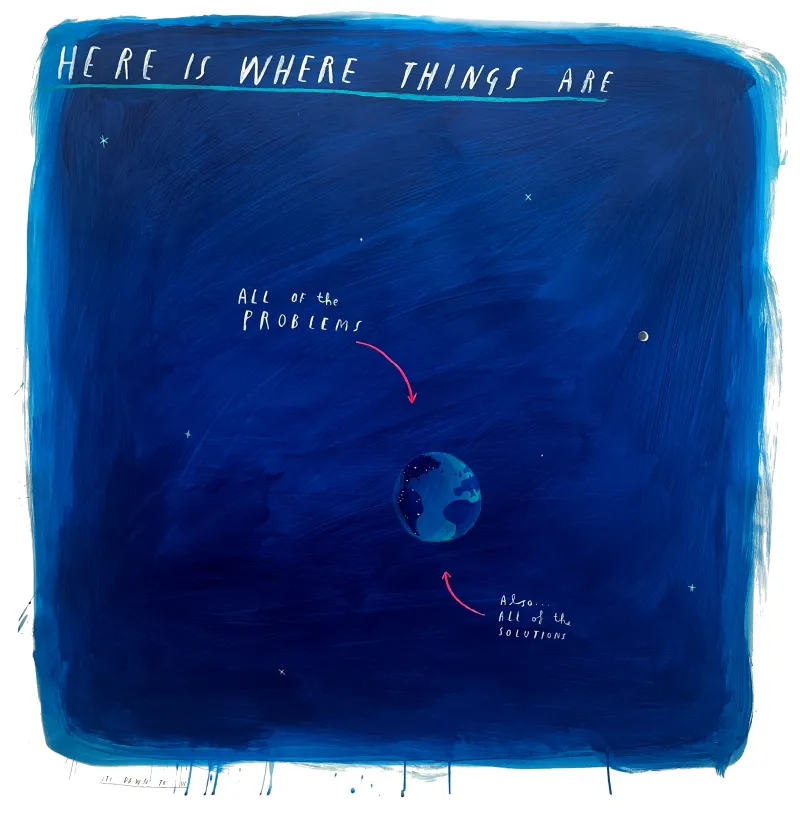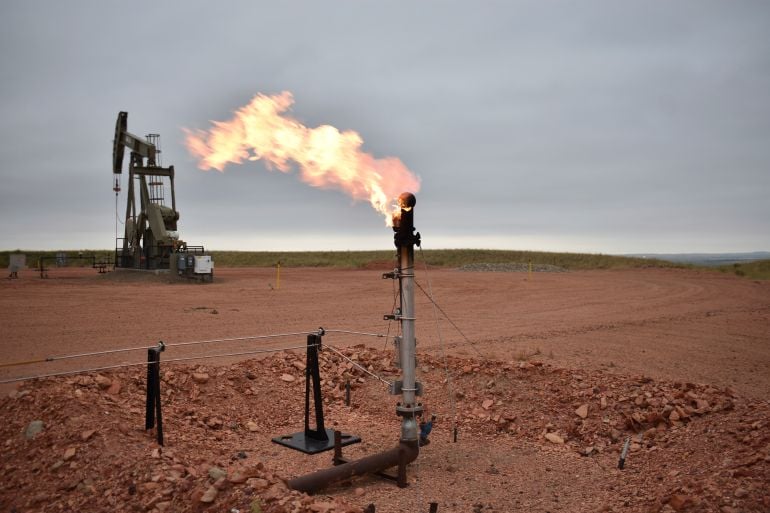114: 30x30: Nature Needs More with Rita El Zaghloul
Nature is counting on us. What future will we choose?
About this episode
Today, only 15 percent of land and 7 percent of our ocean are protected. Nature needs more.
The science is very clear – to prevent a mass extinction crisis, support a growing global population, and address climate change, we must conserve at least 30% of the planet by 2030.
...So why now? The science is very, very clear - If we act now we can limit the disaster, and we could even reverse the trends of climate change in an equitable, just fashion. But how?
This week we’re joined by Rita El Zaghloul, Coordinator of the High Ambition Coalition (HAC) for Nature & People on behalf of Costa Rica. She is the driving force behind ambition at The HAC’s 30x30 campaign, slamming the pedal to the metal on their aim to agree to this plan at the COP15 Convention on Biological Diversity (CBD) in October. The best part about it? It centers indigenous leadership and indigenous rights, while mobilizing financial resources both publicly and privately to ensure protected areas are properly managed, all the while protecting at least 30% of the planet by 2030;
We know our situation is dire. But we also know it’s going to take everything (aka Nature) and everyone (aka People) to keep us below 1.5 degrees. The HAC’s 30x30 campaign is one of the roadmaps there.
Nature is counting on us. What future will we choose?
—
Christiana + Tom’s book ‘The Future We Choose’ is available now!
Subscribe to our Climate Action Newsletter: Signals Amidst The Noise
—
Our Guest This Week:
Rita El Zaghloul
Coordinator of the High Ambition Coalition for Nature & People on behalf of Costa Rica
High Ambition Coalition (HAC) for Nature & People
—
Musical Guest this week:
Mr Bruce
You need to watch Mr Bruce’s BRAND NEW video for I Am Disaster
Sign the petition to recognize the legal status of climate refugees.
—
Don't forget to hit SUBSCRIBE so you don't miss another episode of Outrage + Optimism!
Full Transcript
Tom: [00:00:39] Hello and welcome to Outrage + Optimism, I'm Tom Rivett-Carnac.
Christiana: [00:00:57] I'm Christiana Figueres
Paul: [00:00:59] And I'm Paul Dickinson.
Tom: [00:01:00] This week we talk about the fact that conserving and protecting the natural world is a critical part of dealing with the climate crisis and keeping us within 1.5 degrees. We speak to Rita Zaghoul, the head of the 30 by 30 initiative, and we have music from Mr. Bruce.
Paul: [00:01:15] Thanks for being here.
Load MoreTom: [00:01:16] Thanks for being here. Ok, so this week we are going to delve into the critical issue of nature. This has always been a sort of poor cousin to the climate issue. It's never really received the attention it deserves. But of course, we can't deal with the climate crisis unless we actually have a proper plan to protect and restore nature, as well as dealing with all of the ways in which we interact with the natural system through food and food commodities and all these other different things so that we are going to set out for you this week in our pre-chat. And then we're going to have a conversation with an amazing woman who runs this 30 by 30 campaign. Christiana, do you agree that nature has always been underrepresented?
Christiana: [00:02:03] Well, first, I agree that you have totally misnamed nature because the global atmosphere is also part of.
Paul: [00:02:14] Oh yes, sorry. We say yes. Sorry. Ah yeah.
Christiana: [00:02:21] Ok, so rewind what Tom actually means when he says
Paul: [00:02:26] He's trying to say
Christiana: [00:02:28] What he's trying to say, not doing very well is the land surface and the ocean surface of this planet is what he means and that includes all of our little animal friends and all our plant friends. Okay? That's what he means by nature. But that's not the sum total of nature, Tom. Right now, what was your question now that we've settled that piece?
Tom: [00:02:56] I don't know. Let's let Mr. Dickinson summarize it for us. What was the question, Paul?
Paul: [00:03:00] Broadly speaking, would you agree, Christiana, that this 30 by 30 campaign looking to restore biodiversity and protect 30 percent of the world's oceans and land by 2030 has been the poor cousin of the decarbonization efforts represented by the UNFCCC?
Christiana: [00:03:24] Pretty good, Paul, he was paying attention. Very good.
Tom: [00:03:30] I think that now, Christiana, I think you should summarize that for the listeners because I think there's a few acronyms in there.
Christiana: [00:03:36] So have we developed a business model to reduce emissions from the energy sector, but we have not developed yet a business model to reduce emissions from the land sector or even restore land and oceans? The answer is yes, correct. We have not developed a business model and therefore we are lagging behind on that. And will we be able to hit our climate targets without that piece? No. So a big, big missing piece. And thanks to everyone who is reminding us of that and trying to bring it to attention.
Tom: [00:04:15] And the situation is pretty serious, of course. I mean, we know from recent reports that 75 percent of land surface is significantly altered as a result of human activity. 66 percent of the ocean is experiencing cumulative impacts and 85 percent of wetlands have been lost. So what that actually shows is that only 2.8 percent of land on Earth could be considered intact from a sort of wild nature perspective, of course. And that's not all what we're talking about. And so, you know, the 30 by 30 campaign, of course, is is is critical in so many ways. But one interesting way to start thinking about nature is to divide it into three parts, right? So first of all, there's the conservation agenda that is protecting what we have. That is of the utmost urgency, protecting those rainforests and those boreal forests and temperate forests that are still intact or semi-intact and have this incredible treasure trove of biodiversity contained within them. That's the first piece to conserve what we have. The second piece is to restore what we've lost. We've lost enormous amounts of biodiversity and land and tree cover and natural ecosystems. And actually, study after study has confirmed that restoring those ecosystems has enormous benefits from a climate perspective and from an economic perspective in supporting human settlements and livelihoods and health, etc.. And the final piece is all of the ways in which we, as humanity interact with nature, the food systems, the commodity trading, all these other different elements that also has to work. We need to understand those three buckets and try to work to ensure that our relationship with nature gets better and better across all three of those. And that includes natural systems as well as the ways humans interact with them. Although, of course, as Christiana points out, humans are part of nature. So this emergency is every bit as urgent as the climate crisis. And part of why we wanted to talk to you about this today
Christiana: [00:06:05] This emergency is part of the climate crisis.
Paul: [00:06:09] Absolutely, yes. Exactly. Tom. That's the point.
Tom: [00:06:14] And finally, finally, I'm going to I'm going to make up for it all now. Ok. Finally, this year, this issue of nature is going to be reincorporated and place back where it belongs, contextualize within the overall attempt to deal with the climate crisis and the biosphere crisis by bringing it into the COP and having a big breakthrough in the Biodiversity Convention as well. Correct?
Christiana: [00:06:37] From your lips to God's ears. Now, should we see what Rita has to say about this?
Tom: [00:06:44] Rita is an old friend of yours. Would you like to introduce her?
Christiana: [00:06:46] Well, Rita is an amazing woman, right? Rita Zaghloul or if if she insists on her double-barrel name like Tom does, it is Rita El Zaghloul, a fantastic Costa Rican woman who used to work while she was studying to get her advanced degree. She was working at the Costa Rican mission at the U.N. and I have never seen a sponge that absorbed as much information and knowledge and wisdom in one place for then to very quickly take up the leadership position that she now has as representing Costa Rica. In this HAC, High Ambition Coalition, a coalition of 70 countries led by the U.K., Costa Rica and France. And she is absolutely the motor behind all of this just revving up momentum for this very, very difficult issue.
Paul: [00:07:50] Great. Let's hear from her.
Tom: [00:07:51] Great. And we will be back after with more analysis.
Christiana: [00:08:01] Rita, thank you so much for joining us on Outrage and Optimism and the two of us being Costa Rican citizens. We have to, we just have to announce to the world that this is a very special week for Costa Rica because we are celebrating two hundred years of independence. So happy independence anniversary to all Costa Ricans around the world. And Rita and I happen to be very proud of our country, so I'm sure she is also celebrating from New York. But moving on to the topic that brings us here together, I would love for you to explain for our listeners Rita, what does 30 by 30 mean and why is it important? What is the current situation that we have on both land surface as well as ocean area that makes the 30 by 30 target absolutely critical?
Rita: [00:08:58] Thank you so much, Christiana, for giving that, for making the question. I think the 30 by 30 target specifically aims for the protection of 30 percent of our land and ocean by 2030. This, of course, is not only a matter of quantity, so it's not only a matter of the area coverage, but of course of the quality of this area. While we were constructing this, this coalition and just to give a bit of of a background, it was first presented by the president of Costa Rica in 2019. It was mentioned at the United Nations Climate Action Summit actually in 2019. That was the first time that he spoke about the importance of the 30 by 30 because this is precisely what the scientists were telling us right in 2019. And as you might know, there was the IPBES report that was presented and showed that one million plant and animal species face extinction. And of course, we also noticed that we've lost 60 percent of terrestrial wildlife and 90 percent of the big ocean fish. And so facing those very alarming numbers and really trying to see how we could curb the biodiversity loss and to shed some light on the climate crisis, I'm sorry, on the biodiversity crisis this coalition was created to precisely shed the light also on biodiversity and to bring the synergies between the two crises- the biodiversity crisis and the climate crisis.
Christiana: [00:10:24] Could you just go into that one little bit more because our listeners are somewhat more familiar with climate issues than they are with biodiversity? And just for those who heard Rita say IPBES, that is the equivalent of the IPCC and climate. Those are the scientists who produce the big scientific reports on biodiversity. But could you, in a nutshell, explain to us what is that overlap? What is the interlinkage between biodiversity and climate and why do we have to treat them as actually being two sides of the same coin?
Rita: [00:11:05] Yes, of course. Well, scientists are clear that we need to urgently expand our protected areas and conserved areas to at least 30 percent of the planet's land and ocean by 2030, not only to curb the biodiversity loss, but also because protecting those ecosystems would provide a third of the climate mitigation needed by 2030. I also wanted to just give your audience just a bit of data on recent UNEP WCMC report that found that conserving 30 percent of land and strategic location could safeguard five hundred gigatons of carbon stored and vegetation and soils, and so I think those are mainly very broad ideas of the interlinkages between the two, the two crises. And I think it's been basically how we've been working since the beginning trying to bring the conversation also not only into the biodiversity world, but trying to also bring that attention into the climate world as well on the biodiversity crisis.
Christiana: [00:12:07] And Rita, there is another there are so many similarities between these two actually interlinked challenges. One is the whole issue of equity, right, which is so front and central and goes so deep in the climate discussion, but also in the biodiversity, because we understand that preserving some of the areas, whether it's land or oceans that are currently under either indigenous rights or developing country areas. Some people would say, well, but if we preserve and conserve those regions, then is that not going to stop economic development? Is that not going to keep us in poverty, which is exactly the same argument that we have on the climate side. And I would love to know from you on the biodiversity side of the same coin. How has that being dealt with?
Rita: [00:13:15] It's an excellent question, Christiana, and I'll divide it into two, because I think it's the issue of the role of indigenous peoples and local communities is central to this 30 by 30 goal. I think it's it raised, I mean, we've been trying to raise this awareness from the beginning with the 30 by 30 goal, we have to really implement it correctly in partnership with indigenous people and local communities, respecting their rights and of course, working with them as the most effective, effective stewards of our biodiversity. In the High Ambition Coalition, we have created a task force specifically to work with indigenous people and local community groups to make sure that our narrative and how we are trying to implement and to get to the 30 by 30 goal will be in line and hand in hand having the IPLCs as central partners in this 30 by 30 goal. Now moving into the first part of your question with regards to the economic aspect of it. I mean, the economists have said that it's not only feasible, but it is also beneficial. Several reports have been released, but I will, for instance, refer to a report from Cambridge that tells us that the benefits of the 30 by 30 target outweigh the cost of establishing protected areas. It outweighs by a ratio of five to one. And I think that after the COVID pandemic, we have to really, really make sure to put the nature and the nature sector in the central of our discussions. Another report that I wanted to also share with you is the McKinsey report that showed that the 30 by 30, it will create up to 30 million jobs and it could be created in ecotourism, sustainable fisheries, and it could directly add six hundred and fifty thousand new jobs and conservation management, amongst others. So I think that this argument of not being economically wise or not being good for our development, it's really not a correct argument in the sense it's actually the exact opposite of this argument.
Paul: [00:15:16] Hmm. Well, Rita, if the economic case is there, I'm sure it should happen. It's such a privilege for me to wish to Costa Ricans a very, very happy birthday on the 15th of September, two hundred years since independence. And that's actually what I want to ask about Costa Rica. You, as a country I believe have already achieved the majority of your 30 by 30 target. Is it twenty seven percent? How was it implemented and how could it serve as a model for other countries? You know, what have been the challenges that you've overcome? How did you do it?
Rita: [00:15:51] Yes, of course. And thank you so much for that, Paul. Maybe just to highlight that it has been also a challenge for Costa Rica. I mean, talking a bit about our ocean bit of the equation, we have not been so successful. And so there we have a very, very, very big challenge. We only have two point sixty seven percent of our ocean that is protected. So we have a gigantic, gigantic task and we are doing all our possible to really accelerate our action. In that sense, I think on land we have been much mor-. I mean, our model has been much, much more successful. We are now at twenty five point five percent of our land and we have over 60 percent of our area is is forest covered, so it's we have we are we have been very successful in the land part and it has been really part of our DNA. Right. It's been our model, our development model. We have been trying to really see how we could. I mean, we are a middle-income country, right? We also very much we have this, I mean, the financial bit of it that is also a challenge for us, but we have been very successful in doing it, trying to include, I mean, nature in all our sectors. And I think that with the payment of ecosystems that we implemented over 20 years ago, it has been really pillar for us. And I think it's it's something that we are very, very much proud of. I mean, I think this is mainly part of our success.
Paul: [00:17:27] And how could we get some of this DNA into other countries if our listeners are in other countries, how do you get this DNA?
Rita: [00:17:34] That's exactly what we were trying to do with the Coalition, right? It's not only about raising the awareness of the importance of biodiversity at the highest level and at a government level. It's also taken this awareness to the public, right? And I'm so glad to be sharing with you this today because I'm hoping to bring this light and shed this light on biodiversity, not only at the government level or at the scientist level, but to take it to all across society level. So that's why I'm very grateful for it. I think it's very important to tell the story. It's very important to be very ambitious and to really try to lead by example, and that's exactly what we're trying to do.
Christiana: [00:18:12] So in Costa Rica, Rita, you know how we did it? We taxed carbon. Actually, we taxed fossil fuels, but a tax on them more than 20 years ago. That's where the government gets funding for the payment of environmental services. But in order to prevent this podcast from being only about the wonders of Costa Rica, we have to ask where would the finance for 30 by 30 come from in other countries Rita? Because you know that is always the question. First, you have to get over the hump of does this make sense? You've already argued yes, it makes economic sense for any country and for the planet to do this. Ok, let's say that we agree to that. Next question where is the finance going to come from? If you're not Costa Rica, what are the current, you know, streams of thought of, how do we get this finance in place?
Rita: [00:19:12] It's a very good question. And actually, this is exactly where our focus within the coalition is trying to turn. Now it's on how we implement the 30 by 30, and I think it's a whole of government effort that we need to do. We need to have a public, the public sector being very active in it. And we have heard many countries such as France committing, for example, to 30 percent of their climate finance for biodiversity. The U.K. has committed three billion over the next five years for biodiversity. Germany, amongst others that have been trying to commit. But we need more right? And it's not only actually the United States and the biodiversity world, it's a bit of a different situation than with the climate world because for the CBD, there are observers, so in that sense, they are not formally taking part of the negotiation. But I mean, I understand that for the U.S., they have committed for 30 by 30 at a national level, and the idea would be to try to engage with them for them to also help with the implementation and increase their finance regarding biodiversity as well. So we're in discussions in that sense.
Christiana: [00:20:18] So Rita, with momentum growing the way you have been explaining, we need to ask the final question, which we ask all our wonderful guests on this podcast. And that is on the spectrum between outrageous outrage and hopeful optimism, where do you place yourself and where do you place the HAC and its 30 by 30 target?
Rita: [00:20:44] I have to say that this week precisely, I feel much more optimistic and I am guessing the HAC as well because we after the IUCN and the motions supporting the 30 by 30 that came up came out of it created a lot of momentum. And also next week, we will have a high level event at the highest level heads of state and heads of government in New York. And I think it's bringing a lot of momentum. So I'm today, today as we speak 14th of September, I'm much more into the optimistic spectrum. But I have to say some days it's not. It's not that way.
Christiana: [00:21:19] Some days it's not that way. That's right. Yep, and some days we harbor both. Rita, thank you so much. Thank you for taking the time. Congratulations on everything that you're doing to get get the 30 by 30 target out there into the consciousness. Of everyone who needs to understand the critical importance of it, thank you so much, and again, felicidades por la independencia.
Rita: [00:21:45] Thank you so much, Christiana, Tom and Paul. I mean, it's a great honor and thank you for giving me the space to also bring this awareness to your podcast that I really, really appreciate the time and really enjoyed the conversation. Feliz día de la independencia, Christiana
Christiana: [00:22:02] Feliz día, beso, abrazo, chau. Thank you all so much
Paul: [00:22:04] For your leadership. Bye bye bye. Thank you.
Tom: [00:22:09] So, so how great to sit down? I mean, what an inspiring woman. What an amazing moment. It's just unbelievable the way she's like, taken this seed of possibility, and she's transformed it into this incredible momentum that's going to change the world. What did you both learn? What are you, what did you particularly pick up from that conversation?
Paul: [00:22:31] I mean, one thing I particularly note is that there's a part of this, you know, earlier we were saying it was far away from kind of, you know, the conventional action on climate change, but weirdly enough, like changing the fuel mix of a power station or how steel is produced. You know, it's kind of quite remote to a lot of people, but actually, I hardly know anyone who's got, you know, any kind of land who isn't rewilding and trying to bring nature back. So I think there's something there's quite a strong, guttural link between this intergovernmental effort and something that people very naturally feel is an important part of responding to climate change, using nature to draw down and to come back. I mean, the problem is we chucked it all down. Let it grow back up again. Christiana looks thoughtful.
Christiana: [00:23:18] Actually, like the way this 30 by 30 target is challenging us on, I think, two steps of understanding what we need to do. The first step is to go beyond the energy world into the natural world. That already is a conceptual leap for most people. But the second step that I think is very helpful is that most people, when they think about the natural world, they will immediately think about land that will immediately think about wetlands, forests, grasslands, et cetera, and they don't think about the ocean. And so what I love about this 30 by 30 is it puts both of those into the same bucket. We need to protect 30 percent of land area and 30 percent of the ocean expanse. And that is incredibly helpful, much more difficult, frankly, to protect ocean expanse than to protect land area. Much more difficult. But equally as important. And so I just love the way they just, you know, went for the full thing, right? The full Monty. Let's just put land and ocean because they could also have just said, let's just put land in there. Yeah, and the fact that they just went straight and said, Let's put both. Let's just look at the surface of the planet as it is covered by either water or land. And let's put both in. I think it is remarkable, visionary, very, very challenging and exactly the right thing to do.
Tom: [00:24:49] Yeah. And just I mean, it's so beautifully branded, right? I mean, you know, as we talked about with her, it's been so difficult for nature to cut through as an issue that resonates with people around the world because it's so broad, as we talked about, about conservation, about restoration, it's about different elements of our interaction with that system. So it's difficult for people to get their arms around. But 30 by 30- you protect 30 percent of nature people respond to it, it doesn't seem too high. It seems like a reasonable amount. More nature in people's lives, more natural systems improves the quality of life, and to do it by 2030 is just a wonderful symmetry. So I actually think what's interesting about the way that this has landed at the moment and I say this sitting in the UK is the UK has a conservative, right leaning government that is doing its best to lead on climate, although with some challenging different issues against a conservative base that frankly isn't that interested in it, which is the same as many right of center electorates around the world. And part of the way they're doing it is they're leading on nature. So actually, you know, Boris Johnson and Zac Goldsmith are making a big effort to make nature the centrepiece of the COP, and they're doing that because they care. But they're also doing it because they want that to be the message that goes to their voters rather than conservative government agrees with Extinction Rebellion that we should all, you know, stop driving around, etc. So actually, as a crossover issue that can be picked up by right of center governments, it's a very neat campaign that's well encapsulated that can be communicated to core voters that has deep conservative principles as part of it. Be great to see more political mileage made of that fact because it's very powerful,
Paul: [00:26:25] Conservative and conservation, something where people can really reach across the aisle. I mean, who can be against a tree or a frog or a fish?
Tom: [00:26:36] I mean, that was a lovely comment Paul. Or lobster? Who can be against the lobster?
Paul: [00:26:41] I mean, when I say fish, I mean, like very, very large numbers of fish and even
Tom: [00:26:46] Let's talk about lobsters.
Paul: [00:26:47] No, we're not going to talk about them, but also fish that people don't think are fish like dolphins and whales, which obviously are fish but are not called fish by people who.
Tom: [00:26:56] Dolphins and whales aren't fish.
Christiana: [00:26:58] They're mammals.
Paul: [00:26:58] Well, they've got fins on them and they live in the water and they go around like fish so that you got to get up early in the morning. As far as I'm concerned to say why they're not fish.
Tom: [00:27:07] So listeners need to understand that Paul has a mortal fear of lobsters. It's not a joke, actually. He really gets very, very frightened about this
Paul: [00:27:15] Well they're terrifying that they've got big pincers.
Tom: [00:27:18] The last thing you'd want to do is tweet a GIF of a lobster at him or anything like that. I would really encourage you not to.
Paul: [00:27:23] I would be very happy for there to be a zillion more lobsters and all kinds of fish in the sea because it's going to be, it's like the natural world is sort of perfect before we arrived, and it'll be perfect when we let it go back to what it was doing.
Tom: [00:27:38] No Paul, because you are part of nature, so you need to commune with the lobsters.
Paul: [00:27:43] Yeah, OK. But probably wearing my anti pincer shoes, just saying, I mean,
Tom: [00:27:49] Christiana, didn't you trick Paul once with a toy lobster? Come on, tell us the story.
Christiana: [00:27:53] I did. I did. I put a plastic lobster that was very evidently made out plastif
Paul: [00:27:59] Of was not easy to see it was plastic. No it wasn't.
Christiana: [00:28:02] It's very evidently a plastic lobster in your flat. I mean, he almost he almost jumped out of the balcony and committed suicide.He was so scared he was perspiring.
Paul: [00:28:15] I wasn't scared exactly. It was unconventional one doesn't typically expect to find ... Nature has many different I mean, the dinosaur, some of them are frightening, but we are very happy about them. Of course they've gone now and they're made into fossil fuels, which we buy every day, but not for long. Right? Moving swiftly on.
Tom: [00:28:34] Right, we are going to return to this issue. This is a critical issue and we're not going to get to one point five degrees, which of course we have to do halve emissions this decade. This is the critical decade, but we also have to preserve at least 30 percent of land and ocean by 2030, if not more. We need to engage with this issue and to change our farming practices. We who care about this climate issue need to educate ourselves and understand more about this. So we are going to return to this issue in the next few months because it's going to become quite a hot topic and a central part of the COP. And I'm not going to sign off without noticing that Paul wants to say something.
Paul: [00:29:07] Well, just I'm asking you, Tom can like businesses, investors, can everyone start getting behind the 30 by 30 campaign? Is that like an invitation that we all back governments? Get your governments, get your whatever. Is it governments only in 30 by 30 or can can everyone?
Christiana: [00:29:23] No, no, no. It's everyone. I'm also struck by the 2030 deadline is coming up over and over again, right? The first ones that shows that 2030 deadline was the SDGs, the Sustainable Development Goals to be achieved by 2030. Then we now know from climate scientists that we have to be at one half greenhouse gas emissions as compared to today, by 2030 and now the 30 by 30 on land and ocean. So, you know, if there ever was a decisive decade, this is it. How incredible that from very different avenues of approach. We've all landed on 2030, being the year in which we have to redo most of our economic structures, certainly most of our behaviours, most of, if not all of our financial incentives. It really is quite amazing the turnaround that we have to achieve by 2030.
Paul: [00:30:31] We can. We must, we will,
Tom: [00:30:33] Yep, get some rest everybody, it's going to be a busy nine years. All right now, then we have some music for you. Mr. Bruce will be playing us out and we kick off with a few words from him. Thanks for being here this week. We'll see you next week.
Paul: [00:30:46] Bye bye. Bye bye.
Your hosts


Guests




